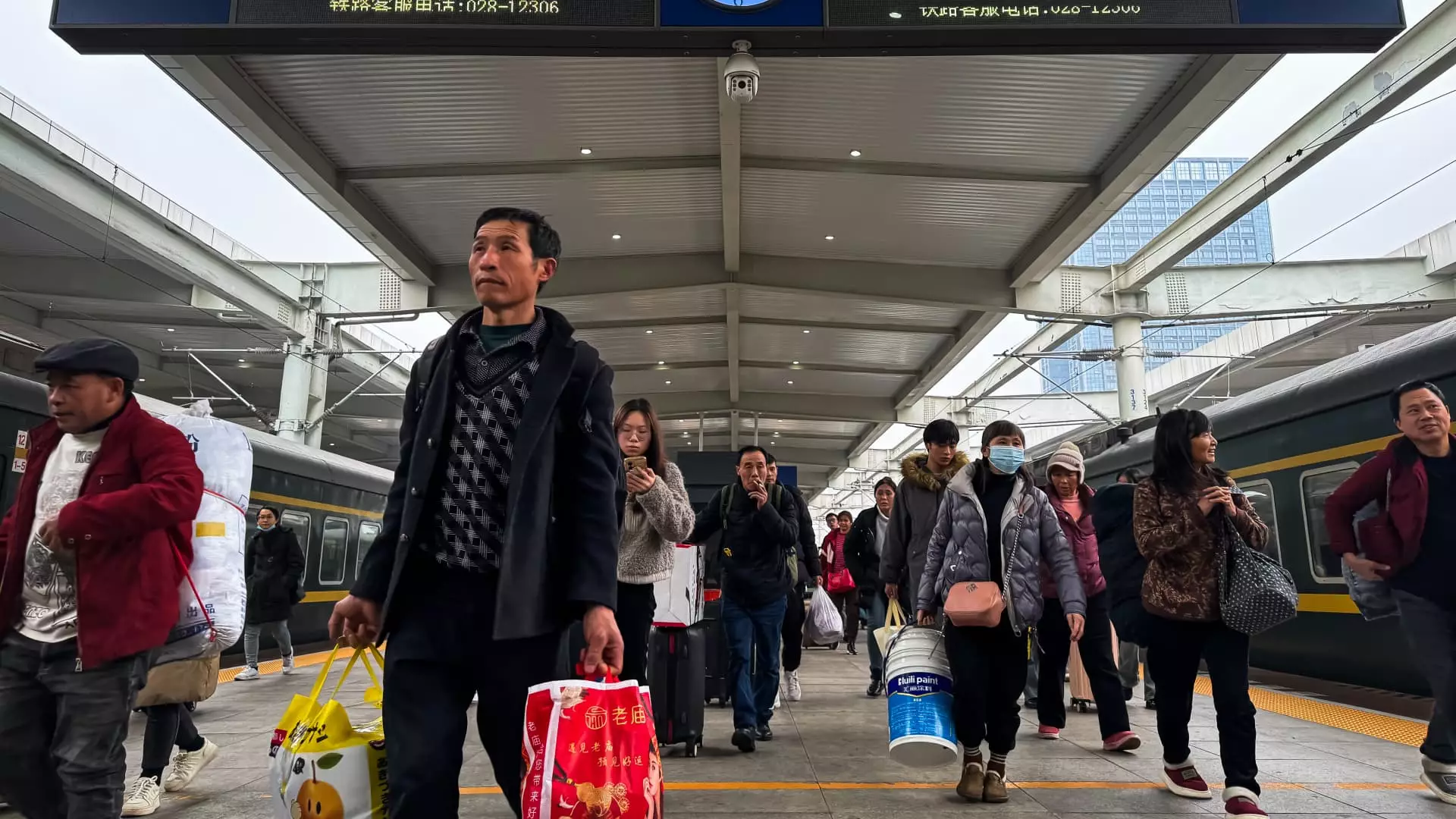Amidst ongoing global economic uncertainties, China’s economic landscape continues to exhibit signs of stagnation. Despite government assurances and measures aimed at revitalizing the economy, the anticipated turnaround has not yet materialized. Policymakers have implemented a series of interest rate cuts and announced ambitious stimulus plans; however, specifics regarding fiscal support are still forthcoming and are expected to be revealed during the annual parliamentary sessions in March. In the meantime, the financial community observes these developments with skepticism, as reflected in the recent commentary from BlackRock Investment Institute, which identifies persistent structural challenges as a major drag on China’s economic growth trajectory.
One of the most pressing concerns impacting China’s economic recovery is the waning consumer demand, compounded by a notable risk of deflation. Recent data indicate a troubling trend in consumer price inflation; excluding volatile items such as food and energy, the rise in prices was a mere 0.5% in early 2024—marking the slowest growth in over a decade, as per the Wind Information database. This situation is worrisome, as it reflects broader issues including lagging consumer spending and declining foreign investment, both of which have been highlighted by numerous government officials, including Beijing’s city mayor. The city’s target for consumer price inflation in 2025 stands at a modest 2%, amidst plans to stimulate technological advancement.
China’s real estate sector, traditionally a cornerstone of economic growth, has been enduring significant turmoil. Following a crackdown on developer debt initiated in 2020, the repercussions have been substantial, affecting not only the housing market but also associated industries such as construction and home appliance sales. Authorities have recently shifted their strategy, acknowledging the need for revitalization after a high-level meeting led by President Xi Jinping. Proposed measures aim to facilitate the completion of unsold apartments while attempting to stabilize the market. However, expert analysis suggests that the turmoil in the real estate market is far from resolved, with rising inventories indicating that property prices may continue to decline.
Despite recent reported surges in new home sales within major urban areas, warning signs remain for the broader housing market. Inventory levels in smaller cities raise concerns about oversupply and prolonged underperformance in housing sales. For example, in Foshan, located close to Guangzhou, inventory is projected to take an extensive duration to clear, revealing the ongoing challenges faced by the sector.
The Chinese government’s recent introduction of trade-in subsidy programs aims to stimulate consumer spending by encouraging the recycling and purchasing of electronics. However, skeptics question whether such measures will lead to sustained growth in consumer demand. Analysts from Nomura caution that any sales boosts resulting from these initiatives are likely to be fleeting, particularly as weak home sales dampen appliance demand. The reliance on the electronic sector, while beneficial in the short term, will not suffice to counter the persistent structural challenges that face the Chinese economy.
The contrast in China’s approach to stimulating its economy can be stark compared to the response observed in the United States during the COVID-19 pandemic, where direct cash transfers to consumers were common. China’s reliance on bond issuance for various subsidies—such as the 150 billion yuan earmarked for trade-in subsidies—demonstrates an indirect method aimed at bolstering consumption without directly handing out cash.
Beyond domestic challenges, China’s economic revitalization efforts are further complicated by geopolitical tensions with the United States. Heightened concerns over national security have prompted a prioritization of domestic players in critical sectors, fostering an environment in which foreign businesses are motivated to localize operations even at the expense of efficiency and productivity. These strategic shifts align with a broader movement in Beijing to intertwine security imperatives with economic development goals.
In light of these dynamics, Chinese authorities have signaled an intention to prioritize consumption as the cornerstone of this year’s economic policy adjustments. As officials articulate plans to enhance security capabilities alongside growth, the long-term prospects for China’s economic recovery will depend significantly on the government’s capacity to balance these dual objectives effectively.
As we look ahead, China’s economic landscape continues to be characterized by both formidable challenges and potential opportunities. The interplay between government initiatives, consumer confidence, real estate stability, and geopolitical factors will shape the pathway forward. Until definitive fiscal strategies are unveiled in March, investors and policymakers alike remain on high alert, assessing how these developments will influence the future trajectory of one of the world’s largest economies. Understanding the interconnected nature of these elements is essential for stakeholders seeking to navigate through the complexities of the Chinese economy in a rapidly evolving global context.

